Does this change the ebike world as we know it? Pinion have combined a motor and gearbox into one unit, eliminating the need for a derailleur. Together with ebike systems supplier FIT, Pinion provide an extensive ecosystem including batteries, displays, and remotes. The system has the potential for bold new ebike designs, while catering to almost all use cases. Where does it excel, and what needs improvement?
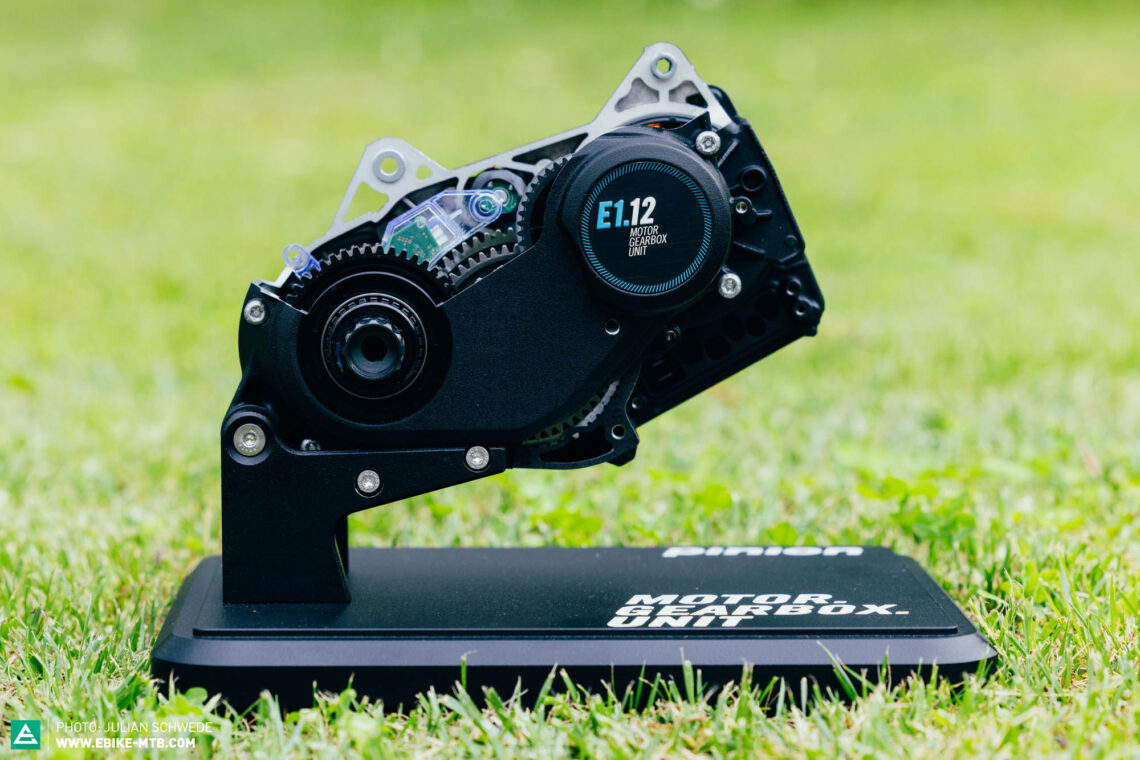
Creaking jockey wheels, grinding gear shifts, and broken chains… ebikes undoubtedly place increased strain on the drivetrain, and this leaves its marks. With pedal assistance, the hardware suffers, resulting in decreased shifting performance, a high susceptibility to breakdowns, and short maintenance intervals. This should be a thing of the past with the belt-driven Pinion MGU. MGU stands for Motor Gearbox Unit: an encapsulated unit that houses the gearbox and shifts electronically, thus completely replacing an external derailleur or geared hub. The motor/gearbox unit is available in four models, E1.9 and E1.12, giving you 9 or 12 gears, and as a speed variant for S-pedelecs, offering assistance at up to 45 km/h.

Hard facts of the new Pinion MGU E1.12 and E1.9
The drive-side of the MGU has nicely rounded edges and a refined look, whereas the opposite side of the unit seems rather chunky with all its cooling fins. Overall, however, the MGU isn’t much bigger than a comparable full-power ebike motor, despite also housing the gearbox. By eliminating the rear derailleur and cassette, the MGU also allows for an unusually clean rear-end design. The brushless, industrial-grade motor in the MGU, further refined and tuned by Pinion, can generate up to 600 W of power – 800 W in the S variant. Pinion specify an “effective” torque output of 85 Nm – effective because the direct output can’t be measured without first passing through the gearbox. If there were a 1:1 gear ratio, the output would be 85 Nm, on par with the Bosch Performance Line CX and Shimano EP8 motors. With this, the MGU offers support of up to 400%. The 12-speed variant has an incredible 600% gear range with gearing increments of 17.7%. With the 9-speed gearbox, you still get a 568% gear range, though with bigger 24% increments between gears – that’s a wider gear range than you get with any commercially available derailleurs.
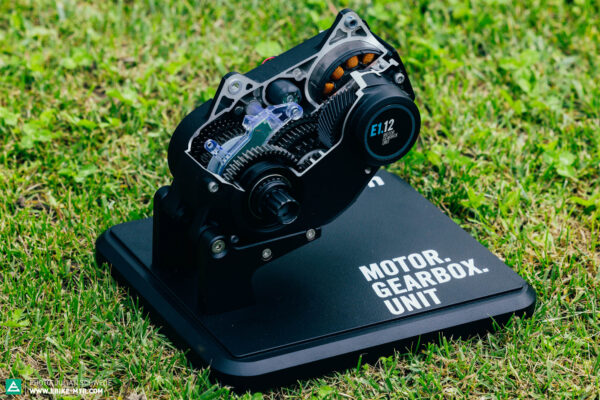

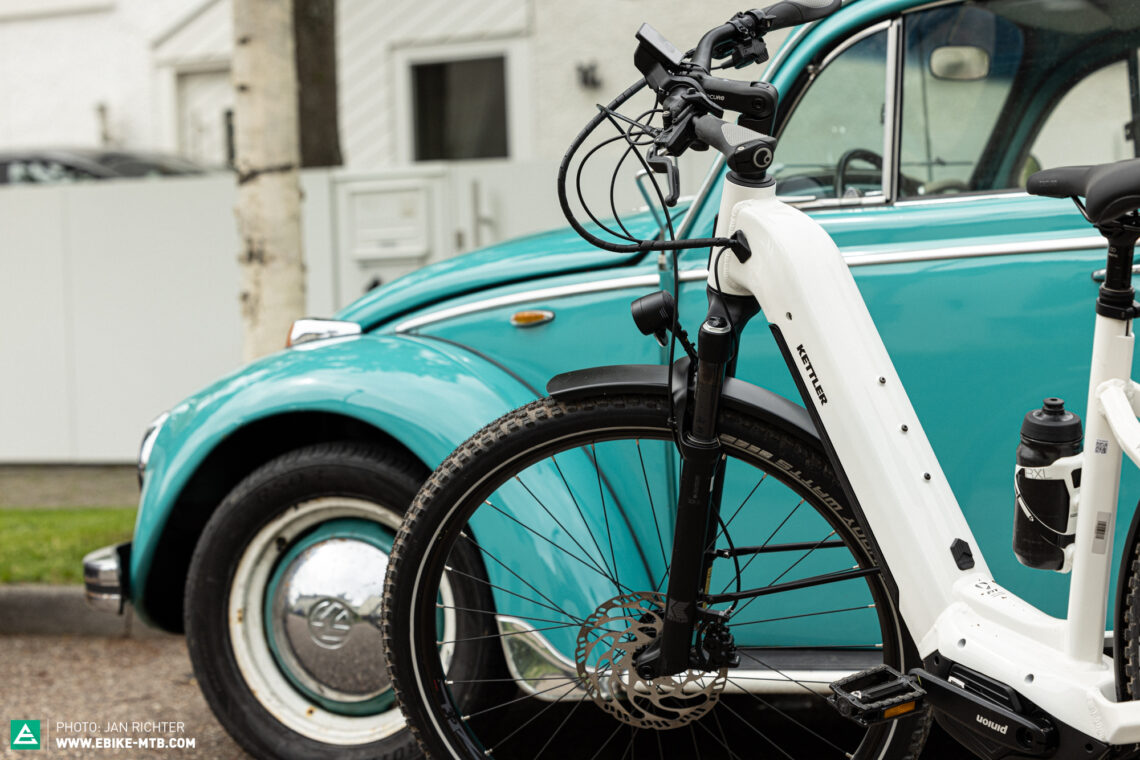
The 12-speed model weighs 4,100 g, and the 9-speed variant tips the scales at 4000 g. Most full-power motors come in at just under 3 kg, though that doesn’t include the drivetrain as with the MGU. To unleash the power according to your preferences, there are four support modes to choose from: ECO, FLOW, FLEX and FLY. FLOW and FLEX are progressive modes that adjust the output according to your input. The FLY and ECO modes, on the other hand, offer linear support. All modes can be customised to suit your preferences via the FIT E-Bike Control app.
| Pinion MGU | E1.9 (S) | E1.12 (S) |
|---|---|---|
| Power output | 600 W (800 W) | 600 W (800 W) |
| Nominal voltage | 48 V | 48 V |
| Comparable torque output | 85 Nm | 85 Nm |
| Max. supported cadence | 120 rpm | 120 rpm |
| Gears | 9 | 12 |
| Total gear range | 568 % | 600 % |
| Gearing increments | 17.7 % | 24 % |
| Easiest gear ratio | 1.82 | 1.82 |
| Hardest gear ratio | 0.32 | 0.30 |
| Weight | 4,000 g | 4,100 g |

FIT supply everything other than the E1.12 and E1.9 motor and gearbox
Pinion may not be the first to combine an ebike motor and gearbox, but they could be the first to break out of their niche. To do so, the German company didn’t keep everything in-house, sourcing external expertise for peripheries such as batteries, remotes and displays. These parts are provided by the ebike systems experts FIT. A subsidiary of Swiss brand FLYER, FIT have collaborated with many other brands, using other motors, and they also take care of everything surrounding the software and app.
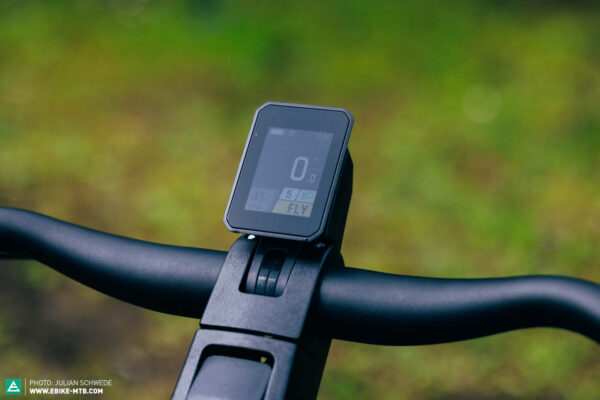
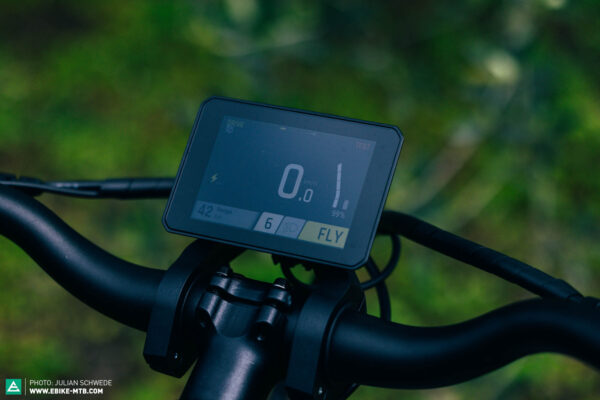
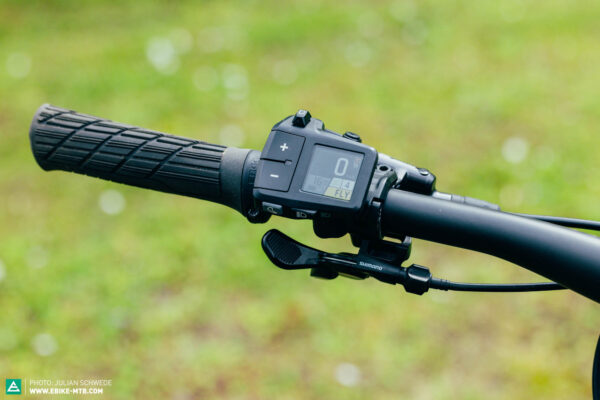
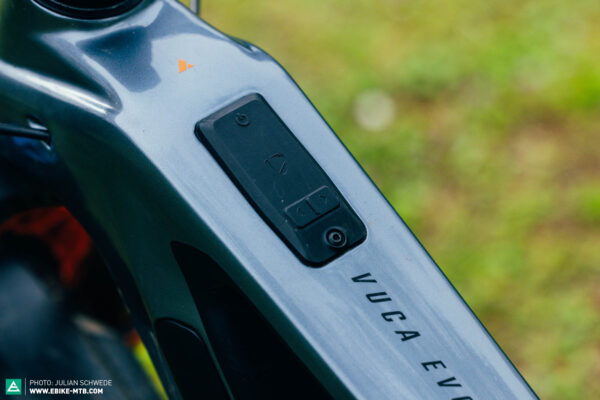
For Pinion, the Swiss company have gone the extra mile, even supplying the four battery options and an optional range extender. This gives you three removable models to choose from – 480, 720, or 960 Wh – as well as a permanently integrated 700 Wh option. With the range extender, you can up that by an additional 468 Wh. Ultimately, this results in potential battery capacity of almost 1500 Wh! So, there’s nothing to stop you from competing in the 24 Hour of Le Mans, apart from the race organisers.
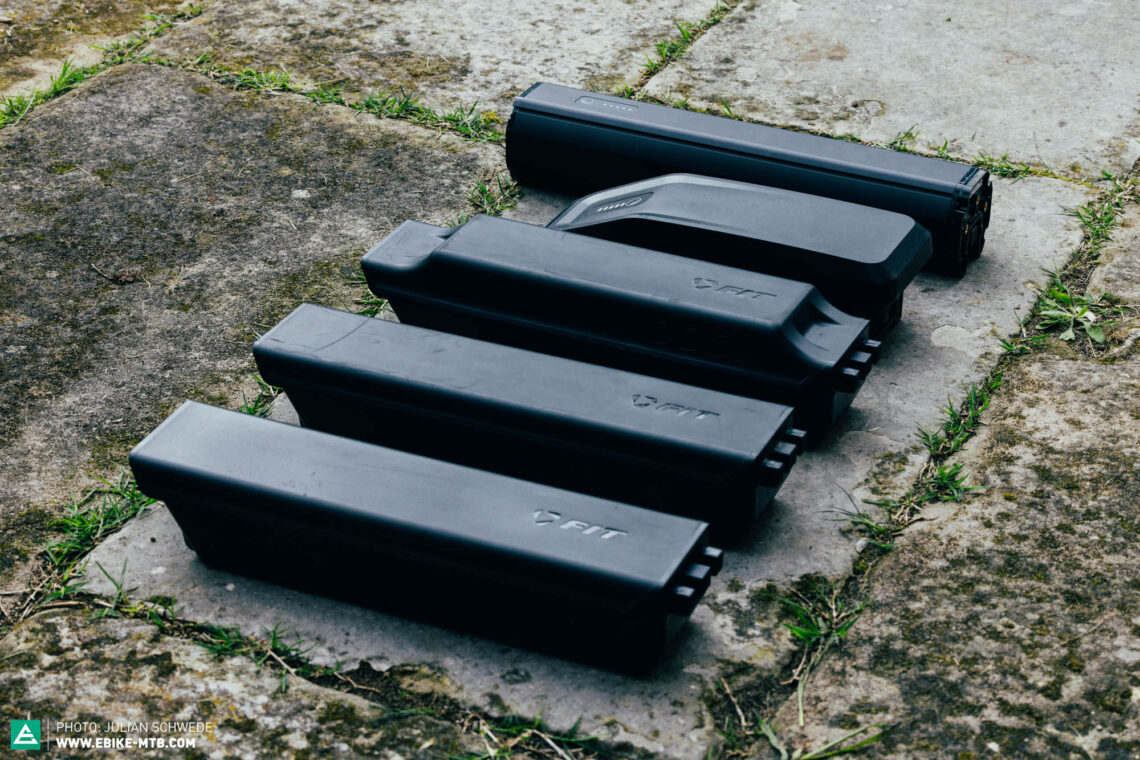
Should the battery run flat, there’s no need to worry about the electronic shifting, despite being powered by the onboard battery. The battery retains a residual capacity that should suffice for at least 1000 shifting operations, even if it is without the support of the motor.
The inner workings and design of the Pinion MGU E1.12 and E1.9
On analogue bikes with derailleurs, the chainring is firmly connected to the cranks and the crank axle, always moving together. Not so with ebikes. The force that is applied to the crankshaft is amplified by the electric motor before being transmitted to the chainring via an internal transmission. Most traditional mid-mounted motors have a kind of transmission between them and the chainring, but only to adapt the motor speed to the pedalling cadence. The chainring rotates at the same speed as the cranks. Ultimately, classic ebike motors simply provide pedalling assistance without reducing or multiplying the gearing ratio. So, the folks at Pinion thought: if you’ve already got a transmission between the motor and the chainring, why not have a gearbox to do just that? With the Pinion MGU, the chainring no longer rotates at the same speed as the cranks, but your input speed is reduced or multiplied instead. This complex arrangement of cogs and two shafts is encapsulated in the motor/gear unit, in an oil bath for lubrication, fully protected from the elements. There is no exposed rear derailleur that could slam into a rock and tear off either.
With the MGU, Pinion sends a big CU to all derailleur manufacturers.
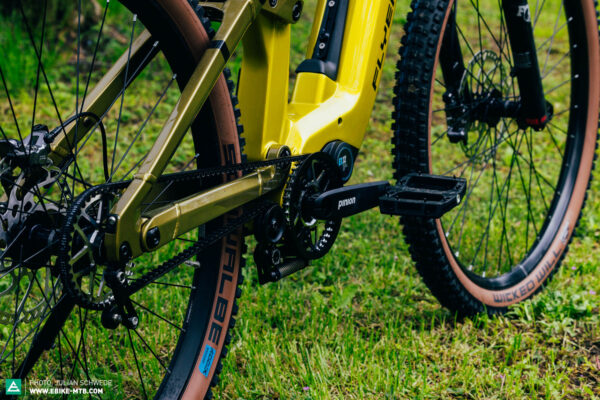
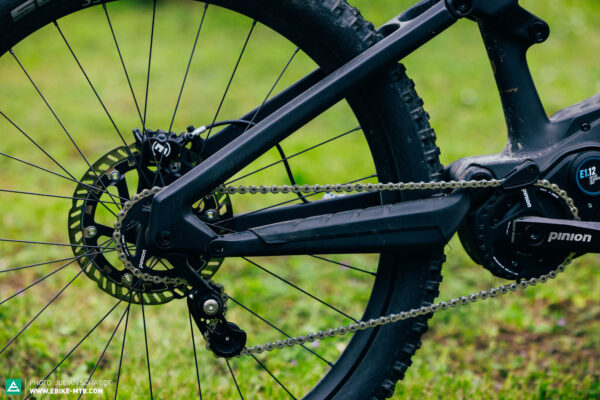
Besides keeping the internals of the gearbox protected, the MGU also allows you to use a belt instead of a chain drive, without having to go single speed or use a geared hub. The belt is virtually maintenance-free and, according to the manufacturer, should last at least three times as long as a chain… provided that nothing unforeseen happens, like an unrelenting onslaught of mud.
The MGU shifts through the 9 or 12 gears electronically. The shifter is modelled on a conventional trigger, and connected by a wire, but instead of pushing a lever to shift, you just press a button. The buttons are rubberised and provide good haptic feedback.


To time the shifts, the Pinion relies on integrated torque and position sensors. As such, the motor always knows where the cranks are positioned and how much force is being applied. So, if you want to shift gears, you don’t have to let off the cranks briefly as with the analogue Pinion gearbox – the software simply waits until the cranks are positioned vertically and then shifts. There’s a natural slump in torque at this position. At a normal pedalling cadence, this all happens very inconspicuously, but it’s definitely noticeable when you’re slowly winching your way up a steep climb.
Our riding impressions and the functions of the Pinion MGU E1.12 and E1.9
The response of the Pinion MGU E1.12 motor
The Pinion motor offers a powerful and direct response. Even on steep climbs, the motor pushes you effortlessly at 20 km/h, head-to-head with the more powerful mid-mounted motors from Bosch and Brose. To find out which is the most powerful motor on the market, check out our big motor group test in the upcoming issue of E-MOUNTAINBIKE, #034. The gearing increments are pleasant, though they’re slightly bigger than on current 12-speed derailleur-based drivetrains due the huge 600% range. However, the motor easily compensates for this. One advantage of the wide gear range is that it allows you to conquer even the steepest climbs, and you can also keep pedalling at high speed (beyond the 25 km/h limit). The power delivery is well differentiated between the different modes: in FLY mode, the most powerful mode, it feels very direct and responsive, similar to Turbo and Boost mode with Bosch and Shimano motors. In FLEX mode, the MGU is much easier to modulate, though you can still make use of the motor’s full power in this mode. This is best compared to Trail mode on the Shimano EP8 or the superbly tuned eMTB mode from Bosch.
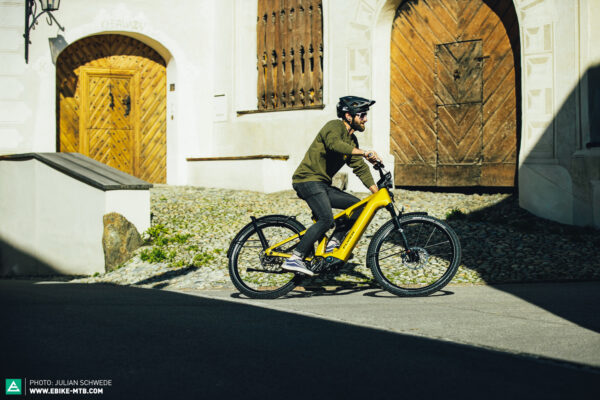

The disengagement of the Pinion motor at the 25 km/h limit feels very natural, whereas the cut-out feels noticeably more abrupt when you stop pedalling at slower speeds. This is due to the fact that the motor doesn’t offer sustained assistance, so it doesn’t keep assisting briefly after you stop pedalling, as with other motors, which helps the cut-out feel less abrupt. The MGU stops the moment you let off the pedals. According to Pinion, this is due to legal issues, and should eventually be resolved with an update.
The shifting behaviour of the Pinion MGU E1.12
The gear changes of the MGU are crisp and fast. Sometimes the shifting is silent and sometimes it’s accompanied by a metallic knock as the gear engages. According to Pinion, the gearbox doesn’t get harmed, no matter how harsh things may sound. You can shift gears on the MGU in any situation, whether you’re pedalling, coasting, or stationary. Unlike the analogue Pinion gearbox, you don’t have to back off the pedals momentarily, but can now also shift under full load, as you’ll be accustomed to from a derailleur. When you shift while coasting, the Pinion gearbox does so completely inconspicuously – something which you can only do with gearboxes and the new Shimano DEORE XT Di2 FREE SHIFT function for ebikes. The MGU also lets you shift while stationary, which is typically reserved for geared hubs. There’s no need for you to let off the pedals when shifting gears, as the MGU regulates that for you. Over the entire range of gears, however, there are two gear changes that tend to take slightly longer. Between the 4th and 5th, and 8th and 9th gears, the system must shift two cog pairs simultaneously, which just takes a little more time. For those who want to know more: the gearbox consists of two sequential sub units, i.e. a 4-gear unit mated to a 3-gear unit in the case of the 12-speed model. Like a triple chainring with a 4-speed cassette, you get 12 different combinations, resulting in 12 gears, though without any overlap, as can be the case with derailleurs. Whenever both cog units must shift simultaneously – which equates to shifting the chain on both the triple chainring and the cassette in our derailleur example above – it takes a little longer and sounds a little different. If you shift between these gears while pedalling, you’ll feel the cranks give way very briefly. This isn’t a big deal when you’re riding on level terrain, but it can get annoying on a climb, especially since, of all gears, these are the ones you’re likely to use most on a climb.

The noise level of the Pinion MGU E1.12
The noise level of the Pinion MGU varies greatly depending on the gear you’re in. The above-mentioned delay between gears 4–5 and 8–9 are also the points at which the sound of the motor changes: in the four lowest gears, the motor runs at very high RPM, and is therefore the noisiest. Accordingly, the motor is quietest in the four hardest gears (9–12), and somewhere in between the two noise levels in the four middle gears (5,6,7 & 8). This is somewhat counterintuitive, as you’re more likely to want to have a conversation when you’re slowly winching your way up a climb than you’re riding at a higher speed, in which case the riding sounds predominate anyway.
Special functions of the Pinion MGU E1.12 and E1.9 gearboxes
The MGU allows you to view the gearbox and ebike motor as one connected unit. Therefore, the software has access to all the relevant data, including the gear you’re in, your speed, input torque, pedal position, cadence, gradient of the terrain, and outside temperature, and it can adapt the shifting logic accordingly. We’ve already explained the fact that the shifting is usually timed to take place when the cranks are vertical, and that there’s a natural drop in input torque, but Pinion use the available data to unlock more functions besides, called Start.Shift and Pre.Shift.

With the Start.Shift function, you can select your preferred start gear from the menu. If you now come to a standstill, the software automatically engages the preselected gear for you to pull away in. The Pre.Shift is a semi-automatic shifting function that selects the appropriate gear according to a pre-configured cadence while you’re coasting. This prevents you from spinning out when coasting downhill because you’re still in an easy gear from the climb. Tip: pick a slightly slower cadence like 60 RPM. Fortunately, Pinion have a fully automatic mode in the pipeline for future projects.
Which bikes feature the Pinion MGU?
The new Pinion motor features on some big-name bikes for its launch, including SIMPLON, BULLS and ROTWILD. This motor is versatile and capable of performing well on various types of bikes, including eMTBs, urban bikes, E-SUVs, and adventure bikes. SIMPLON already have two MGU equipped bikes on offer, the Rapcon and the Kagu. ROTWILD developed the RX 1000 with this motor, and combined the MGU with a chain drive. BULLS present the VUCA EVO AM – a thoroughbred eMTB with 150 mm travel. FLYER have incorporated the motor into the Goroc TR:X E-SUV, and Tout Terrain (long-time pinion pioneers) present the Pamir. KETTLER are launching the PINNIATO HT COMFORT, a comfortable step-through ebike. Finally, you’ll also find Pinion MGU driven bikes from the brands I:sy, and Pegasus & Zemo.

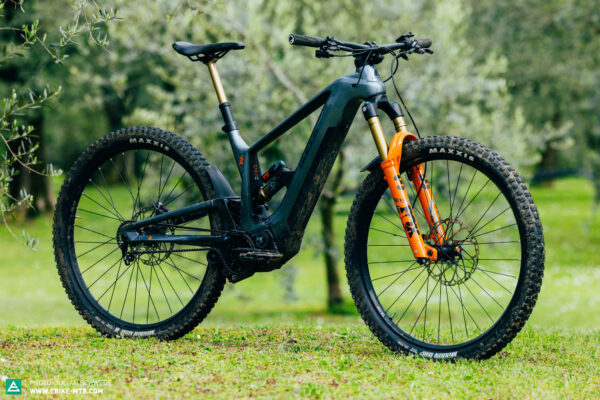
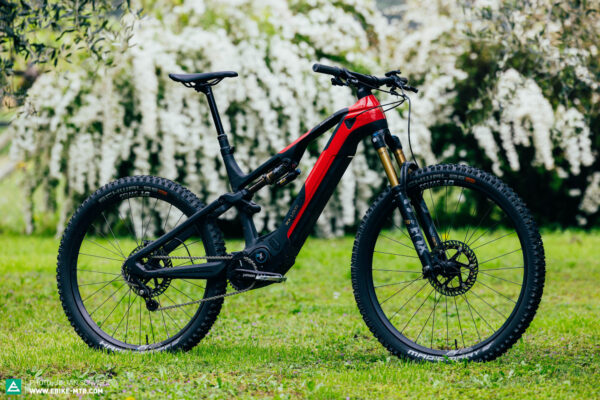
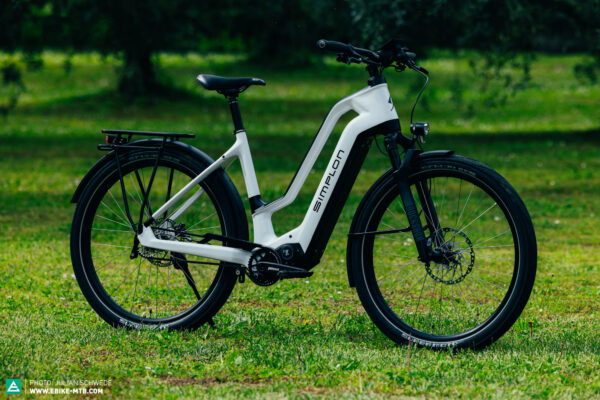
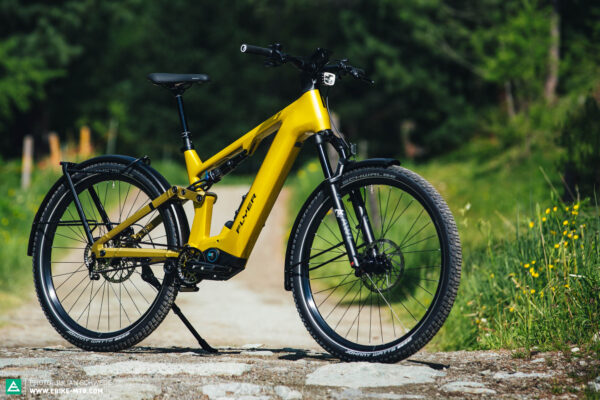
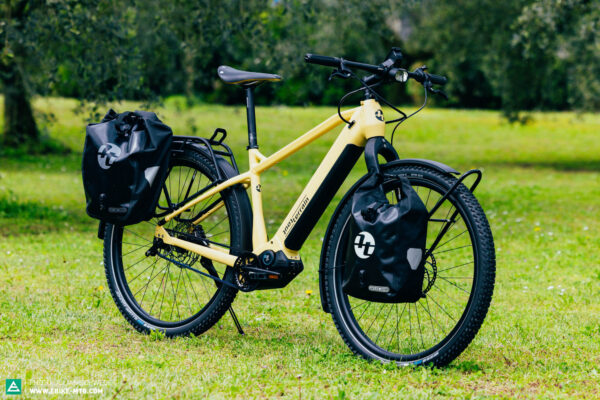

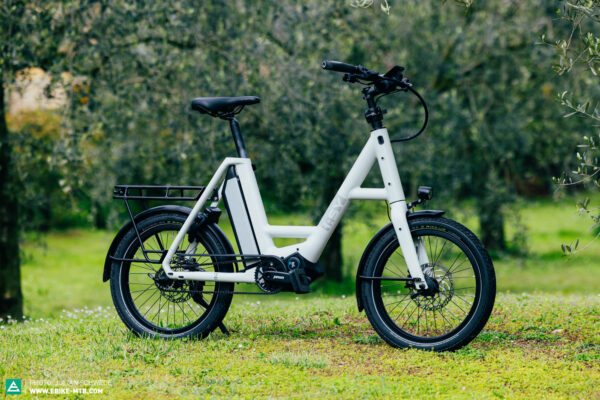
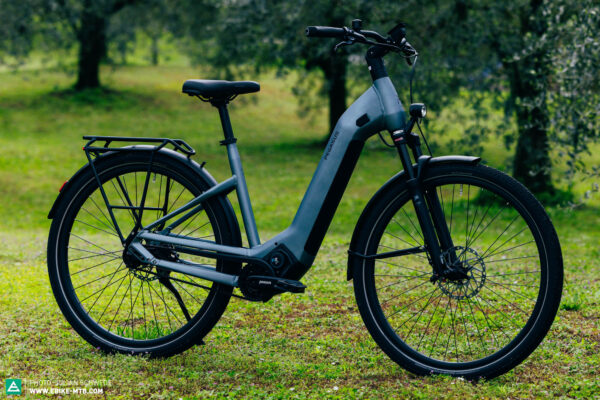
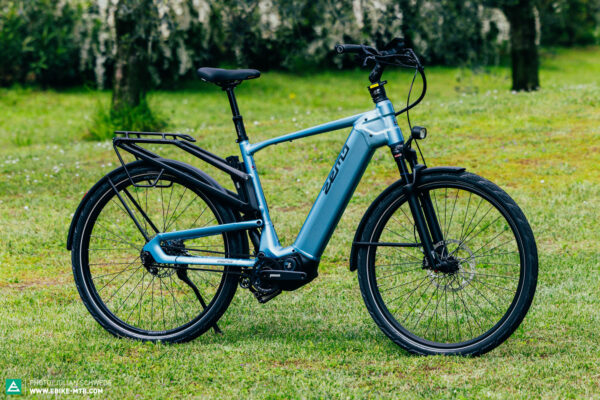
Maintenance and care of the Pinion MGU E1.12 and E1.9
The advantages of the MGU system are particularly evident when it comes to maintenance. In contrast to conventional systems, it only requires an oil change every 10,000 kilometres, or once a year, like a car. To do so, simply open the oil drain plug, drain the old oil and refill it with fresh oil. This eliminates the need for regular maintenance during the year, as is usually the case with derailleur gears. It isn’t necessary to degrease and re-lubricate the chain after each ride, there’s no need to adjust the derailleur, and you don’t run the risk of bending the hanger. Even if the MGU is combined with a chain, you’ve still got advantages, such as a permanently straight chain line, the total elimination of transverse loads on the chain during shifting, which usually leads to a broken chain, and standard chain spares. The Pinion MGU redefines commuting with an E-SUV, especially in urban areas.
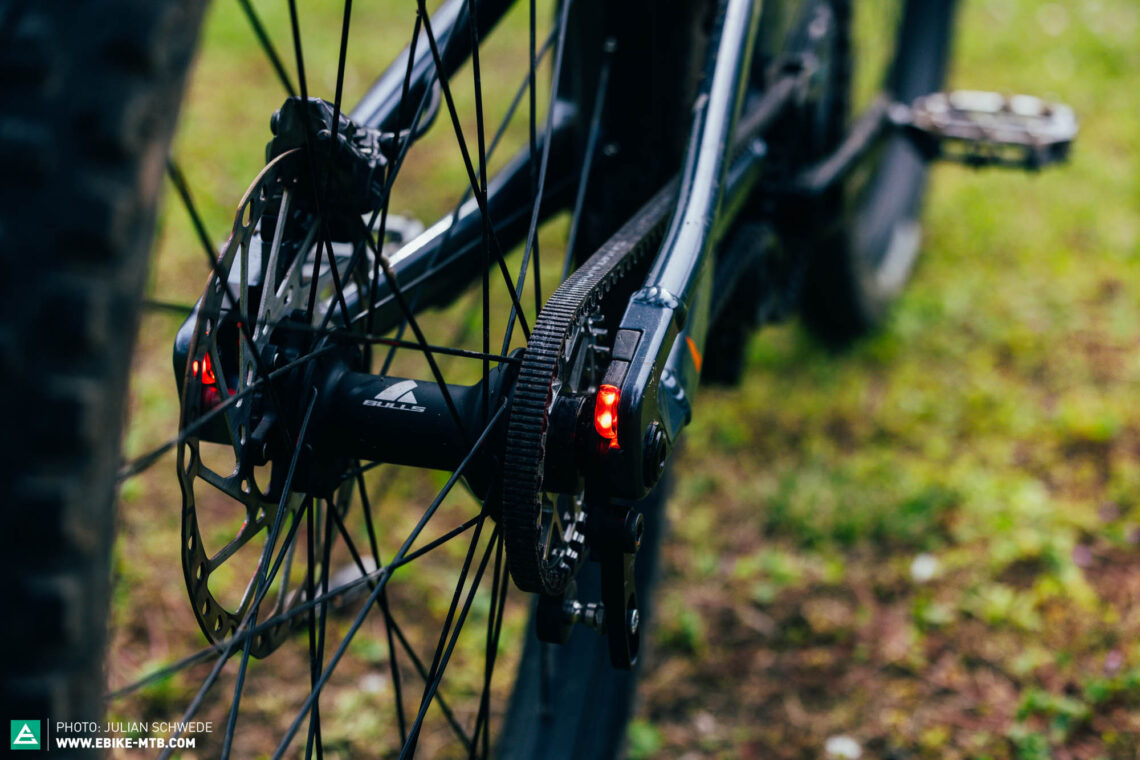
You can ride for a whole year without so much as looking at the drivetrain. In most cases, maintenance is limited to the tires and brakes. According to Pinion, the belt requires zero maintenance, and it should last at least as long as the annual maintenance interval for the gearbox, as long as it doesn’t experience any transverse loads and you don’t get big stones stuck between it and the sprockets. It’s important to keep out dust and dirt to maximise the service life of the belt drive. When it’s time to replace the belt, you must remember that it can’t be split like a chain. If the belt surrounds the chainstay, as with most bikes, you need to be able to split the rear triangle in order to get the belt on and off the bike. Alternatively, you could have a jockey wheel directly behind the front chainring to keep the belt above the chainstay.
Which riders and situations is the Pinion MGU for?
For commuters on E-SUVs, the MGU system is an absolute no-brainer. You can just ride, without having to worry much about maintenance. An annual visit to the workshop will usually suffice, just like a car. The motor is ideal for towing trailers or for cargo bikes in urban settings, which exposes the drivetrain to heavy loads and brings conventional chain driven systems to their limits.

There are some limitations to using the MGU on a performance mountain bike. On the one hand, you’ll miss the lack of sustained assistance on technical climbs, in which case the delay in shifting to certain gears can also be annoying. However, the low centre of gravity of the MGU system results in a well-balanced bike. It decreases the unsprung mass on the rear due to the elimination of the derailleur and cassette. With a lower unsprung mass, the rear suspension can be designed to be particularly sensitive and active. For advanced riders: the anti-squat of the rear suspension is easier to work out due to the fixed position of the belt or chain, negating the need to factor in the different positions of a chain on a cassette. If manufacturers design the rear-end kinematics and tune the shock with this in mind, the MGU system can also unlock new potential regarding suspension performance. At the same time, the belt drive poses a technical challenge: A belt requires a split in the rear triangle or a jockey wheel to divert it around the chainstay, which can limit the design somewhat. For example, a DW-Link or other rear-end design with a closed rear triangle with the chainline running through it would require a splittable frame, or you’ll have to use a belt that can split, which we haven’t seen many of on the market.

Conclusion on the new Pinion MGU E1.12
The Pinion MGU has what it takes, as well as the backing from bike brands, to change the ebike market. For Pinion’s debut of a motor combined with a gearbox, the MGU is surprisingly refined. With its powerful character, smart shifting, optimised centre of gravity, and reduced unsprung mass, the motor has a lot of potential in the sporty eMTB segment. At the same time, however, the MGU E1.12 poses new challenges for bike designers. Pinion also have some fine-tuning to do, especially to the software that controls the timing of the gear changes. In the urban segment, where reduced maintenance is key, the Pinion motor and gearbox unit already plays to its strengths.
Tops
- low-maintenance
- shifting under load
- Pre-Shift and Start-Shift in urban settings
- tidy look of the rear end
- reduced unsprung mass
Flops
- belt drive often requires you to split the frame
- noisy in the lower gears
- no sustained assistance and delayed shifting in certain gears
For more information, visit pinion.eu and fit-ebike.com
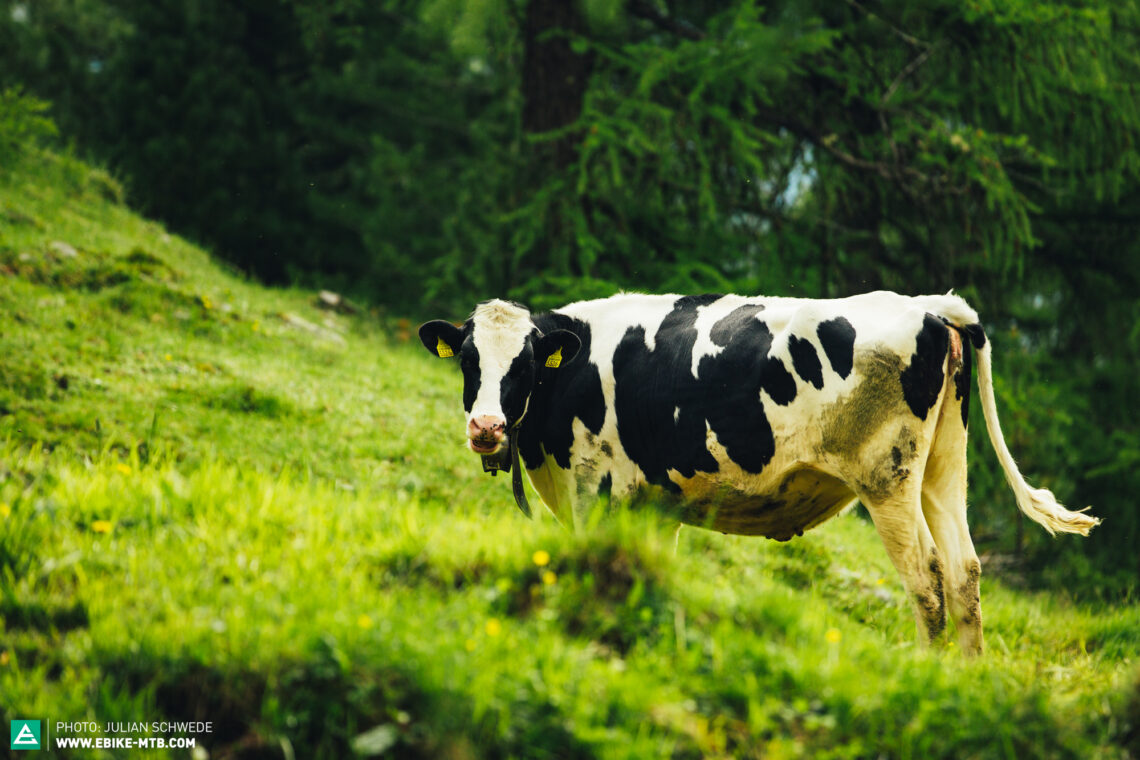
Did you enjoy this article? If so, we would be stoked if you decide to support us with a monthly contribution. By becoming a supporter of E-MOUNTAINBIKE, you will help secure a sustainable future for high-quality cycling journalism. Click here to learn more.
Words: Julian Schwede Photos: Julian Schwede, Peter Walker, Remi Cordier









